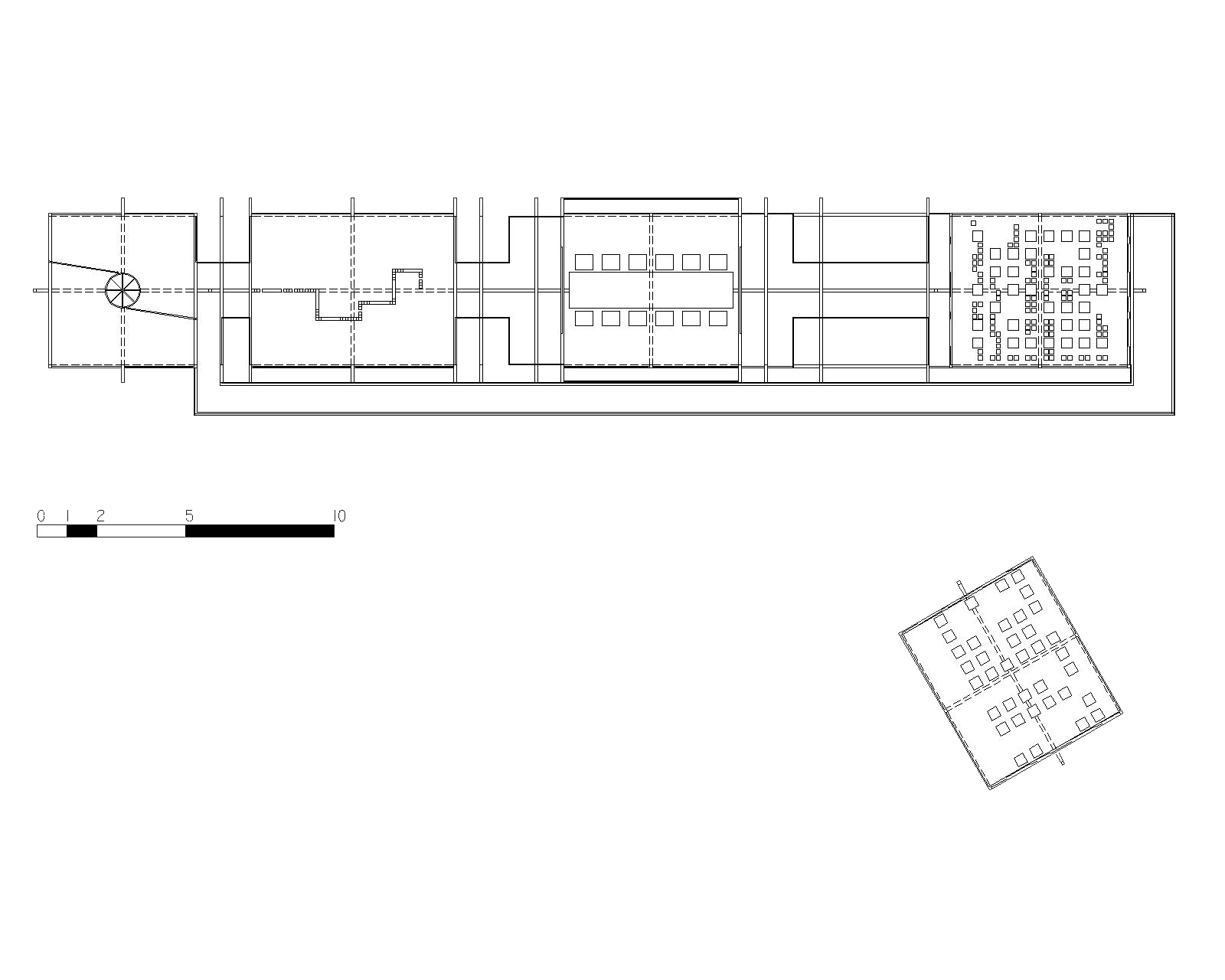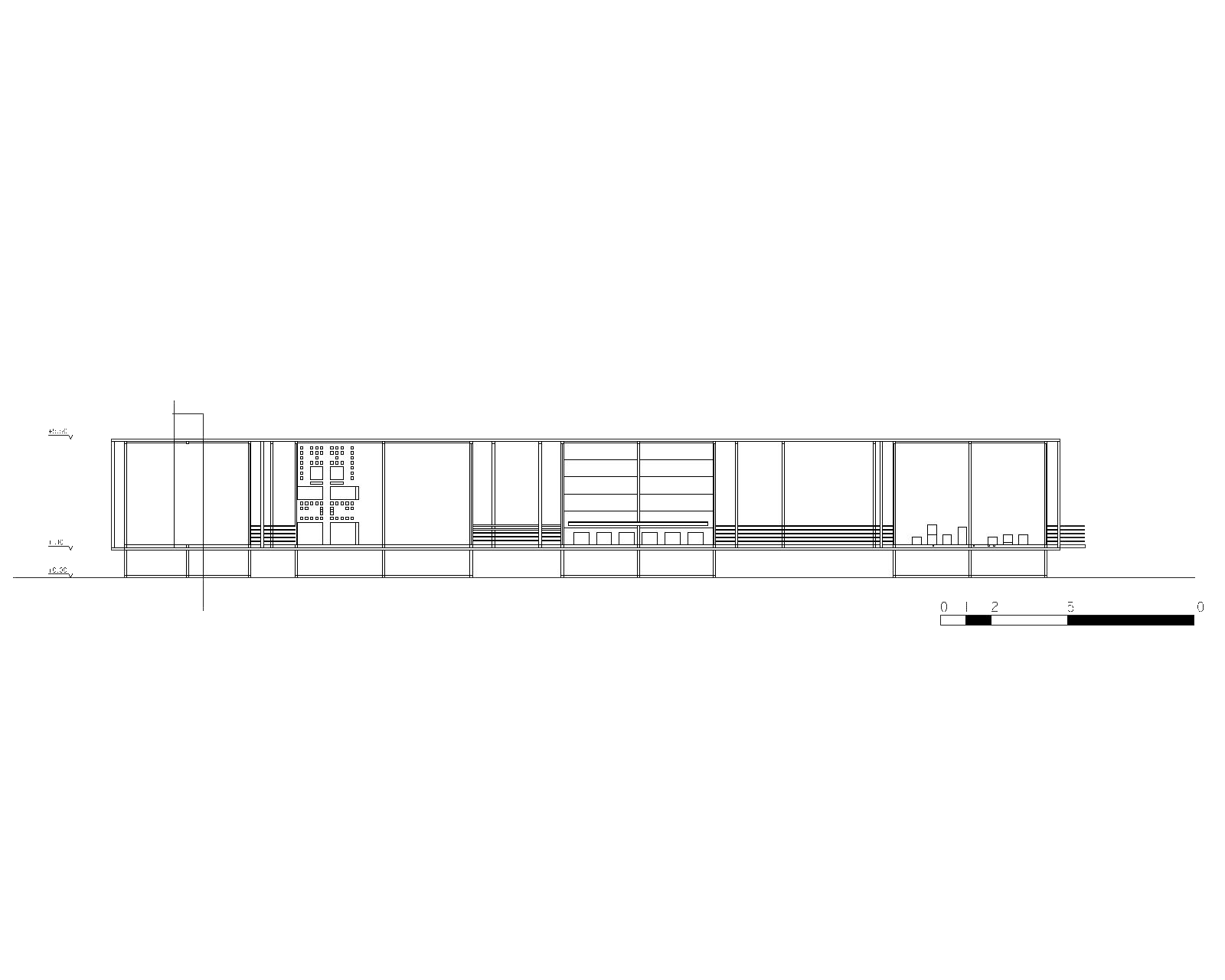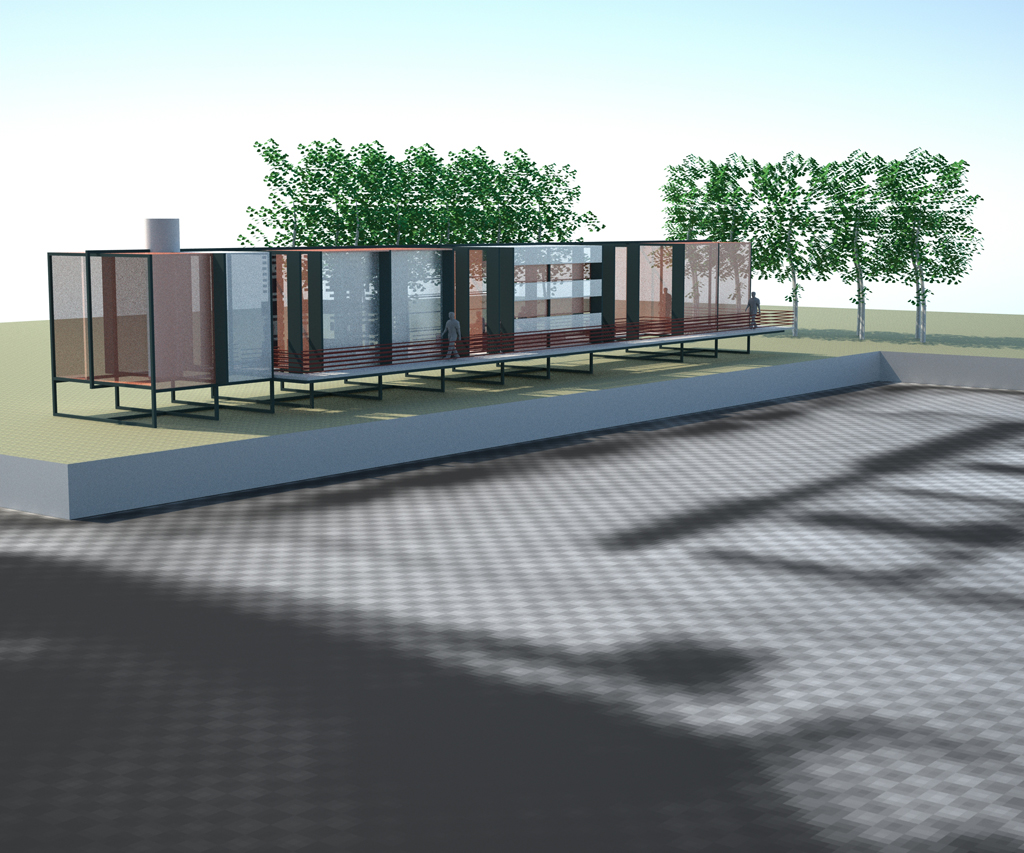University of Thessaly | Elective Design Studio IV
Professor: Giorgos Triantafyllidis
In collaboration with: Elpiniki Kekelou, Nikos Margaritis
Concept
Because of the placement of the exhibition pavilion within walking distance from the site with Roman ruins, we decided to design it in order to be transferred to other ancient monuments, too. Thus, a universal theme from ancient Greek times was selected. “The welcoming of the visitor”.According to Homer (Odyssey, A ‘, 120) the welcoming of visitors in ancient times followed the following stages:
- When entering the house the visitors handed over their weapons to be stored.
- They were offered a seat and water in order to wash themselves.
-They were often asked to play a game with the host.
- They were then offered food and wine.
- If they wanted they could rest in a room.
- Before leaving they were offered some gifts.
The building
In order to make a symbolic representation to this process, we designed the pavilion in five independent sections that refer directly to these stages.The pavilion stands at 1.20 m. from the ground and is supported by a metal body which is quite distinctive in order to have the least contact with the ground of the site.
Visitors entering the first section are called to choose which path they want to follow, to remove their shoes and place them in the central cylinder. Thus, after being welcomed in all languages they continue “unarmed” throughout their route in the pavilion.
Turning to the second part which is transparent, they play a “game”. The wall that divides the space consists of blocks with printed information that can be rotated and read only by one visitor at a time. Through the gaps, there is visual contact with the “partner” on the other side.
In the third translucent part, they are treated food and drink while in the drawers under the table they can find information leaflets about the site.
Visitors come to the fourth part, which is totally isolated from the outside, where they can rest on the glass display cases and focus on the transparent floor that houses archaeological finds from excavations in the area.
By leaving the fourth section, they are led by means of an external ramp to the first section where they can get their shoes back. Then, they can either leave the site or visit the fifth section of the pavilion which is located in the archaeological area, detached from the rest. In this completely transparent section they can be further informed about the excavations from the texts that are placed on the windows and thus to complete the experience of being welcomed in the site.

 Natalia Mylonaki
Natalia Mylonaki



